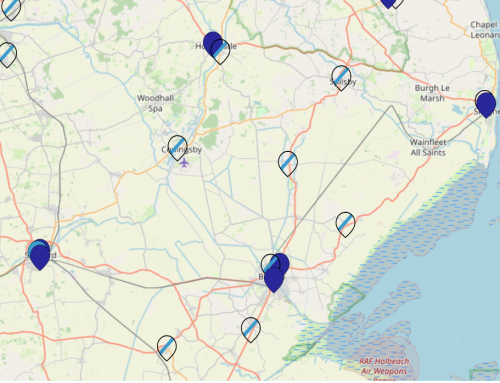A letter sent to Jim Skinner, the Chief Executive of the Grammar School Heads Association, in response to their spring newsletter.
6 March 2017
Dear Mr. Skinner,
Your spring newsletter featured details of your round table meeting with Justine Greening, Nick Gibb and officers, where you discussed plans to extend selective education. The summary of the meeting included the comment, ‘Ministers and officials agree with us that there are a lot of people, who are philosophically opposed to selection, who keep saying it damages the education of other pupils but present little or no evidence to support this claim.’
Yet academics, think tanks and campaign groups have produced a great deal of evidence showing that the net impact of grammar schools is a negative one. This evidence has been presented in academic studies, newspaper articles and at length in submissions to the government’s green paper. In case you have missed it, here are the key points:
Fact 1: Disadvantaged children achieve worse results in grammar school areas.
Evidence: Researchers at the Education Policy Institute found a results penalty for pupils living near selective schools. They calculated that children receiving free school meals (FSM) attending a high-quality comprehensive instead of a non-selective school in a selective area would see an improvement of 0.8 grades per subject, equivalent to a 6.4 grade difference spread across eight GCSEs.[i]
Evidence: The Royal Society researched science education in selective areas, with a focus on disadvantaged learners. They found that selective schools have an overall negative impact on the total participation of FSM pupils in double and triple GCSE Science. [ii]
Evidence: The OECD highlight the inequalities caused by early selection. Their 2012 study of global school systems stated, ‘Early student selection has a negative impact on students assigned to lower tracks and exacerbates inequities, without raising average performance.’[iii]
Evidence: The attainment gap is worse in selective areas. The DfE’s own figures show that selective areas have the largest attainment gaps in the country. Research conducted by Professor Strand at Oxford University for Buckinghamshire County Council compared Bucks to 10 local authority statistical neighbours, and found that at Key Stage 4 (KS4) Bucks had the largest achievement gap.[iv]
Fact 2: Grammar schools have a detrimental impact on nearby schools.
Evidence: Researchers at the University of London found that students in non-selective schools in grammar school areas gained one less grade on average than equivalent students in comprehensive schools.[v]
Evidence: Education Datalab showed a similar effect, finding pupils in non-selective schools in grammar school areas made 0.2 of a grade less progress per subject than similar students elsewhere.[vi]
Evidence: A University of Bristol study of Buckinghamshire school data also concluded that pupils who were unable to attend grammar schools would do better, on average, in a comprehensive system.[vii]
Fact 3: Grammar school entrance exams discriminate against children from certain backgrounds, including high ability children – and attempts at creating so-called ‘tutor proof’ tests have failed.
Evidence: The Sutton Trust found that grammar school entrance exams are inaccurate at predicting future academic results for 22% of children tested, when looking at eventual GCSE outcomes. [viii]
Evidence: A report by 11-plus test provider GL Assessment highlighted problems with using the 11-plus test for EAL pupils. EAL candidates will, on average, perform less well than non-EAL candidates on the same test…’ The report also explained that dyslexic children are unlikely to be judged accurately by the test.[ix]
Evidence: Kent County Council have found that just 57% of high ability children in receipt of Pupil Premium in Kent attend a grammar school, compared to 79% of similar ability children not eligible for Pupil Premium. The Sutton Trust have also shown that disadvantaged children with high prior attainment are not passing the 11-plus in proportion to their numbers. [x]
Evidence: Data published by the grammar schools in fully selective Buckinghamshire shows that efforts to create a coaching resistant test have actually made outcomes worse. In the first four years of the new test, the proportion of children at Bucks state schools passing the exam declined, while privately educated children made gains.[xi]
Fact 4: Selection exacerbates social and racial divisions.
Evidence: Researchers at the Institute of Education found that individuals who grew up in areas where selective schooling took place were likely to have unequal wages. They found that, even when controlling for gender and background, 18 percent of the earnings gap could be put down to the selective schooling system. [xii]
Evidence: In Buckinghamshire, the 11-plus pass rate of children from Pakistani backgrounds (the biggest ethnic minority group by some margin) is half that of White British children. [xiii]
Evidence: The government’s own statistics show that children with SEN statements or Education, Health and Care Plans represent just 0.04% of grammar school pupils, despite making up 1.7% of the whole secondary school population. Disabled children without statements make up only 3.6% of grammar school pupils, but 11.8% of all secondary pupils. [xiv]
We have set out four facts, not assertions or philosophies, supported by 14 pieces of evidence. The data underpinning this evidence is official data produced either by the government or local authorities. If you have access to alternative data or academic studies which disprove any of these facts, now is the time to put them in the public domain.
For educationalists and academics alike, the accepted wisdom of the past forty years has been that any small advantages conferred by grammar schools to the minority of pupils who gain places are more than outweighed by the wider detriment suffered by the majority of children. The onus is surely therefore on those advocating an expansion of grammar schools to present new evidence demonstrating beyond doubt that this wisdom is wrong. Until government ministers and their cheerleaders do this, it is difficult to conclude anything other than that you are pursuing a policy rooted in narrow ideology alone.
Yours sincerely,
Melissa Benn, Comprehensive Future
Katy Simmons, Local Equal Excellent (Buckinghamshire)
Dr.Michael Collins, Kent Education Network
James Coombes, Transform Reading and Kendrick
Rachel Cook, Excellent Education for Everyone (Royal Borough of Windsor & Maidenhead)
Alan Gurbutt, Equal Excellent Lincs
Steven Longden, Trafford Residents for an Inclusive Education Service
References
[i] https://epi.org.uk/report/grammar-schools-social-mobility/
[ii] https://royalsociety.org/topics-policy/publications/2016/response-schools-work-for-everyone/
[iii] https://www.oecd.org/pisa/keyfindings/Vol4Ch2.pdf
[iv] https://democracy.buckscc.gov.uk/mgAi.aspx?ID=29392
[v] http://onlinelibrary.wiley.com/doi/10.1080/01411920701208209/pdf
[vi] http://educationdatalab.org.uk/2016/09/grammar-schools-four-key-research-points/
[vii] http://www.tandfonline.com/doi/abs/10.1080/03054985.2013.776955
[viii] http://www.suttontrust.com/wpcontent/uploads/2008/10/SuttonTrustFullReportFinal.pdf
[ix] https://www.whatdotheyknow.com/request/341561/response/892316/attach/2/GLA%20Report%209%20May%202014.pdf
[x] https://www.kent.gov.uk/__data/assets/pdf_file/0009/58680/Grammar-Schools-and-Social-Mobility-June-2016.pdf
[xi] http://localequalexcellent.org.uk/index.php/2016/09/13/11-plus-test-no-evidence/
[xii] http://repec.ioe.ac.uk/REPEc/pdf/qsswp1409.pdf
[xiii] http://localequalexcellent.org.uk/index.php/2016/06/13/racial-bias-11-plus/
[xiv] http://researchbriefings.files.parliament.uk/documents/SN01398/SN01398.pdf





